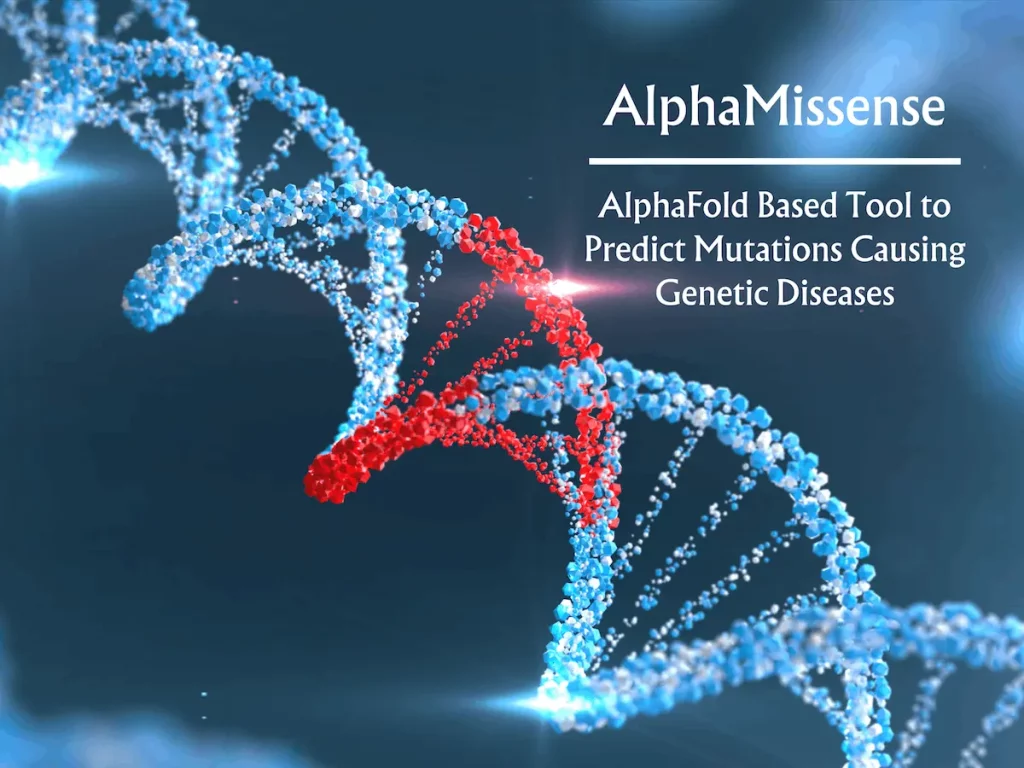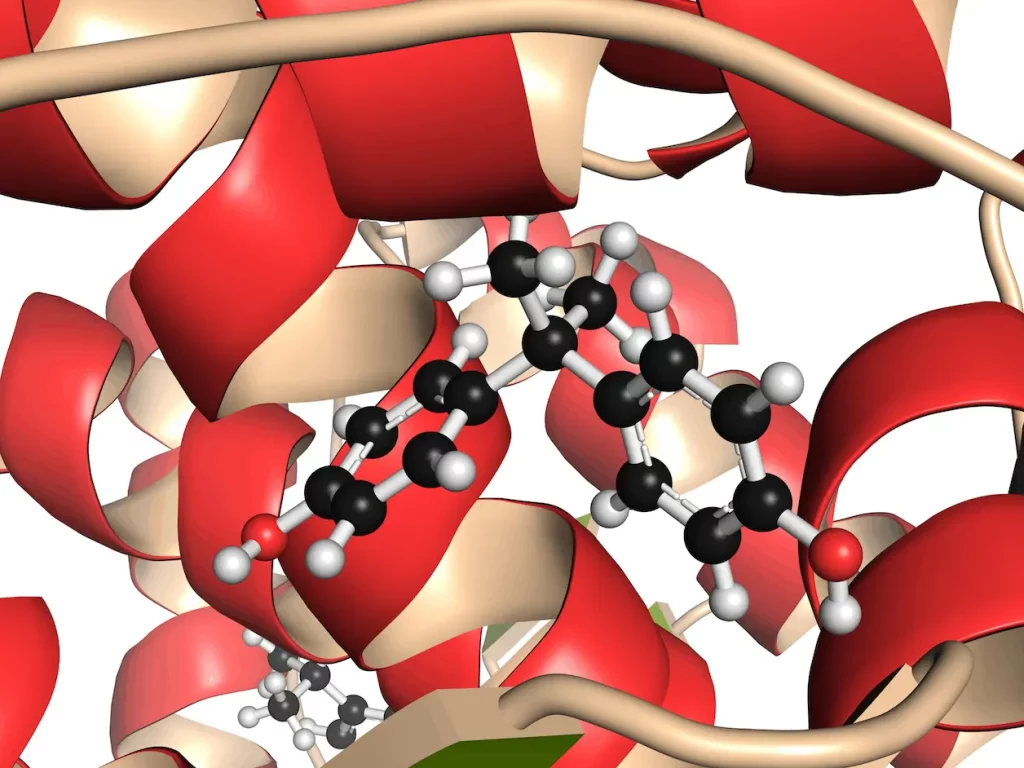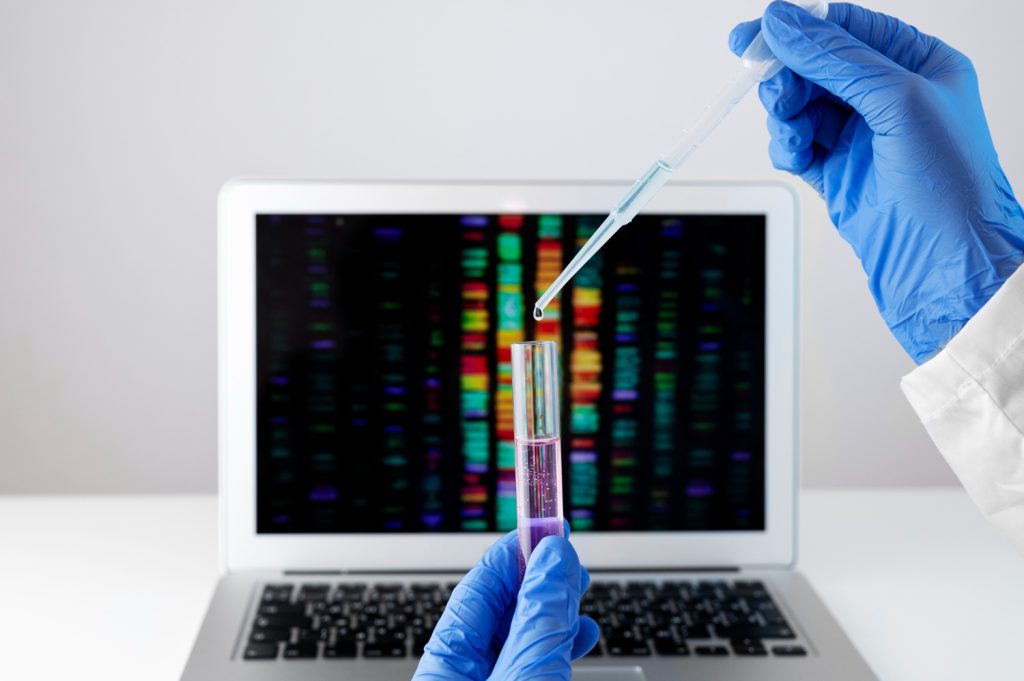In 2023, bioinformatics discoveries have catalyzed immense progress across the life sciences landscape. These ground-breaking discoveries have provided insight into the complex workings of biological systems, processes, and disease states. From discovering new diagnostic markers to mapping the complexity of the brain, these innovations promise to transform medicine, evolution, and beyond. The pace of bioinformatics discoveries fueled by the rise of artificial intelligence heralds a new era of opportunity. In this article, we take a closer look at 10 of the best bioinformatics innovations of the year and their profound impact on the field of biology. Get ready for an exciting journey to the greatest discoveries in bioinformatics!
#1 CRACKING THE CODE OF MYSTERIOUS “Y” CHROMOSOME
Scientists have struggled for decades to sequence the enigmatic Y chromosome essential to male biology. The Telomere-to-Telomere (T2T) consortium presented the complete sequence of the human Y chromosome, encompassing 62,460,029 base pairs from the HG002 genome (T2T-Y). Thanks to new computational techniques, they can finally peer into its genetic blueprint and understand male infertility and human evolution like never before.

#2 UK BIOBANK’S GENETIC TREASURES
The UK Biobank made DNA data on over 350,000 people publicly available to researchers worldwide. Combined with the Biobank’s health surveys and scans, this is an unmatched resource. It will revolutionize our grasp of how genes affect diseases. And it could enable personalized medicine tailored to patients’ genetics. Unlocking these genetic secrets marks a major turning point for advancing human health.

#3 SOLVING THE 50-YEAR BLOOD GROUP ENIGMA
For over 50 years, the human blood group system remained an enigma to researchers – a biological puzzle with missing pieces. In a thrilling turn of events, bioinformatics researchers have conquered this decade-old challenge. By synergizing computational might, statistical rigor, and machine learning, Lund University scientists illuminated the hidden blueprint guiding blood type. The research identifies two candidate CR1 enhancer motifs in intron 4 that bind to GATA1 and drive transcription.

This breakthrough promises to revolutionize blood banking and transfusions. By elucidating the genetic basis of blood types, scientists can now match donors to patients with far greater precision, potentially saving countless lives. Beyond transfusion, understanding the waltz between these proteins also paves the way for organ transplantation innovations.
But more than its immediate impact, this research highlights the illuminating power of bioinformatics itself. When computational analysis dances in tandem with biology, there is no limit to what we might uncover.
#4 AI TOOLS DECODE GENES AND PROTEINS
Google’s DeepMind achieved a significant breakthrough with the introduction of AlphaMissense, an AI tool designed to identify disease-related genes. Like a detective hunting for clues, AlphaMissense can pinpoint disease-causing mutations with ease. This development marks a major stride in genetic research and has the potential to revolutionize the detection of rare genetic disorders.

In another feat, scientists at the Netherlands Cancer Institute have unveiled AlphaFill, an algorithm utilizing sequence and structure similarity, “transplants” missing small molecules and ions from experimentally determined structures to predicted protein models. The database, “alphafill.eu,” details over 12 million successful transplants on 995,000 AlphaFold models, accompanied by validation measurements. AlphaFill expertly models missing pieces of proteins, paving the way for revolutionary drug design.

#5 ILLUMINATING THE BRAIN’S INNER WORKINGS
Scientists at the Human Brain Project have made advances in AI that mimic how the human brain works. These AI systems can learn and adapt over time as brains do. This could lead to smarter robots and computers. It might also improve fields like healthcare and education.

In another triumph, Allen Institute scientists mapped over 30 million brain cells in mice. This created an inventory of cell types and locations in the brain. It is a big step towards understanding how brains develop, function, and cause diseases. Scientists can use this to develop better treatments for conditions like Alzheimer’s and Parkinson’s.
#6 AI ASSISTS DESIGN OF NEW ANTIBIOTICS
Researchers at MIT developed an AI-based technique to discover new antibiotics. It screens chemicals and identifies ones that can treat drug-resistant superbugs like MRSA (Methicillin-resistant Staphylococcus aureus). So far, the AI found over 500 antibiotic candidates. And it designed two promising new ones called abaucin and halicin. This shows AI could greatly boost our ability to combat superbugs.

#7 LARGE LANGUAGE MODELS INTERPRET BIOLOGY’S COMPLEX CODE
In 2023, large language models (LLMs) made waves in healthcare and life sciences. For example:
- MedLM combines LLMs from Google, it provides responses to medical queries in order to improve diagnoses and suggest treatments.
- LLaVA-Med scans biomedical literature to highlight promising research areas.
- CodonBERT reveals how mRNA tweaks impact immune cells to inform vaccine design.
- GeneGPT answers intricate questions about genetics with pinpoint accuracy.
- DrugGPT streamlines and accelerates ligand design for drug development.
- DrugCHAT brainstorms potential new compounds to treat diseases.

These LLMs act as research assistants, accelerating the translation of science into life-saving discoveries.
Discover More about the Marvel of LLMs and their Impact on Solving Biological Challenges!
#8 AI-POWERED TESTS REVOLUTIONIZING DIAGNOSTICS
Oxford researchers invented an AI-based test identifying respiratory viruses in 5 minutes. It uses a nasal/throat swab and techniques like computer vision. This could drastically transform the diagnosis of illnesses like the flu or COVID-19.

In another breakthrough, scientists developed a saliva test to detect infections by analyzing mRNA. This test is almost 90% definite and reliable, unlike temperature checks. It has the potential to change disease detection and ultimately improve patient outcomes.
#9 BIOINFORMATICS REVOLUTIONIZES CANCER RESEARCH
In 2023, the revolutionary power of AI-based technology has increased significantly, especially in the field of cancer research. Here’s a look at some of the groundbreaking achievements:
- Scientists from the Max Planck Institute for the Science of Light, Germany, have invented a clever new way to rapidly analyze biopsy samples using artificial intelligence and a single-cell approach. By carefully studying the physical properties of individual cells, this automated method can detect cancerous areas in just 30 minutes, much faster than current methods. This innovative technology can quickly diagnose other conditions, such as inflammatory bowel disease and it promises to save patient lives and minimize surgery delays by accelerating treatment decisions.
- In another exciting development, UMC Utrecht scientists created an advanced tool called Sturgeon to diagnose brain tumors during surgery. Unlike other devices, Sturgeon works effectively even with limited scan data, like what’s available mid-operation. After training on extensive simulated data, Sturgeon demonstrated 72% accuracy in classifying tumor samples in under 45 minutes. By providing swift and accurate diagnoses, Sturgeon can empower medical teams globally to personalize care for neurosurgery patients.

- In yet another breakthrough, Oxford scientists developed a machine learning model that predicts a woman’s risk of dying from breast cancer in the next decade – before she even develops the disease. The model utilizes machine learning on an extensive dataset of over 11 million females aged 20-90 years. It aims to identify high-risk individuals to enable more informed, tailored screening and prevention strategies beyond standard care based solely on breast cancer diagnosis risk. This pioneering study aspires to encourage clinical intervention for those with a high contingency of aggressive breast cancer and associated mortality rather than basing decisions only on incidence risk.
#10 TRACING THE PATTERNS OF LIFE’S EVOLUTION
Although whole transcriptome data is becoming more and more abundant, there are still limited techniques for analyzing global gene expression across phylogenies. Indiana University scientists developed CAGEE (Computational Analysis of Gene Expression Evolution), a software tool that uses advanced computer resources to study changes in gene expression across species. With tools like CAGEE comparing gene expression patterns, we step closer to grasping how life adapts and evolves. CAGEE helps answer complex questions about gene evolution by analyzing large datasets from multiple organisms, a task requiring powerful HPC infrastructure like IU’s Slate-Scratch, Quartz, and Big Red 200 supercomputers. CAGEE’s flexibility and scalability benefit biologists of all stripes, offering faster insights into gene expression patterns than manual analysis, pushing the boundaries of genetic research.

THE FUTURE: FILLED WITH BIOINFORMATICS PROMISE
The future seems filled with promise. Bioinformatics is helping unravel life’s mysteries through data – and 2023 is just the beginning. The story continues…
CONCLUSION
Above are just a glimpse of a few of the many advancements that have marked 2023 as a momentous year for bioinformatics. As researchers gaze toward future frontiers, one truth remains clear – bioinformatics is poised to continue unlocking nature’s secrets, lighting the path ahead with ingenuity and opportunity. While challenges loom, the revolutionary potential of bioinformatics burns bright, destined to drive bigger breakthroughs in 2024 that elevate health, sustainability, and the human condition to remarkable new heights.
Note: This is a list of some of the most exciting bioinformatics discoveries, this is not a ranking article.
Article Sources:
Scientists Assemble the First Complete Human Y Chromosome Sequence: A Milestone in Genomics Research. Article | Paper
UK Biobank Releases Unprecedented Genomic Data Trove to Transform Global Health. Article
Elucidation of the low-expressing erythroid CR1 phenotype by bioinformatic mining of the GATA1-driven blood-group regulome. Paper
Google’s DeepMind Unveils AlphaMissense: A Breakthrough AI Tool for Decoding Genetic Enigmas. Article | Paper
Meet AlphaFill: An AI Algorithm to Fill Missing Ligands and Cofactors in AlphaFold Models. Article | Paper
Modelling continual learning in humans with Hebbian context gating and exponentially decaying task signals. Article | Paper
Scientists unveil first complete cellular map of adult mouse brain Article
MIT Researchers Use AI to Design New Class of Antibiotic Candidates in the Fight Against Superbugs. Article | Paper
Oxford scientists develop test that can identify respiratory viruses within five minutes. Article | Paper
Transforming Infection Diagnosis: Saliva-Based mRNA Biomarker for Accurate Detection. Article | Paper
Single-cell Based AI Pathologist for Rapid Physical Phenotyping of Cancer Biopsies. Article | Paper
Fast-tracking CNS Tumor Diagnosis: New AI System ‘Sturgeon’ Accurately Diagnoses Brain Tumors in Minutes. Article | Paper
Oxford Researchers Develop a Machine Learning Model to Predict 10-Year Breast Cancer Mortality Risk. Article | Paper
CAGEE: Computational Analysis of Gene Expression Evolution. Article | Paper
Learn More:
Dr. Tamanna Anwar is a Scientist and Co-founder of the Centre of Bioinformatics Research and Technology (CBIRT). She is a passionate bioinformatics scientist and a visionary entrepreneur. Dr. Tamanna has worked as a Young Scientist at Jawaharlal Nehru University, New Delhi. She has also worked as a Postdoctoral Fellow at the University of Saskatchewan, Canada. She has several scientific research publications in high-impact research journals. Her latest endeavor is the development of a platform that acts as a one-stop solution for all bioinformatics related information as well as developing a bioinformatics news portal to report cutting-edge bioinformatics breakthroughs.










[…] Top 10 Bioinformatics Breakthroughs of 2023! […]